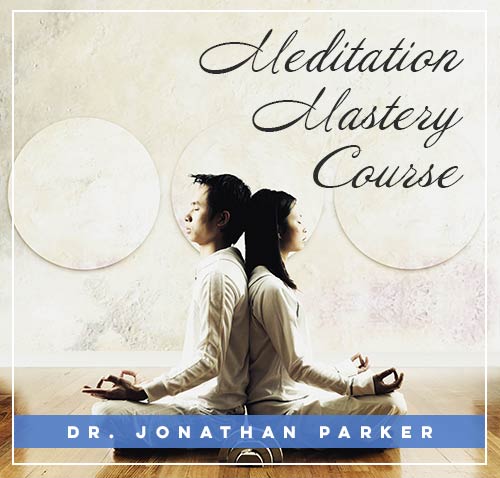Walking Meditation: Moving with Intention and Awareness

TRANSLATE BUTTON AT THE END OF THE ARTICLE
What is Walking Meditation?
Walking meditation is a mindfulness practice that involves walking with intention and awareness, focusing on the present moment and the sensations of walking.
Unlike traditional sitting meditation, where practitioners sit still, walking meditation incorporates movement into the practice.
It allows individuals to cultivate mindfulness while actively engaging their bodies in motion.
Walking meditation can be a powerful tool for reducing stress, improving concentration, and promoting overall well-being.
Origin and History of Walking Meditation
Walking meditation has roots in both Buddhist and Hindu traditions, where it is often used as a form of mindfulness practice.
In Buddhism, walking meditation is known as "Kinhin" and is commonly practiced as part of Zen meditation.
This slow, deliberate walking practice is believed to cultivate awareness, concentration, and tranquility.
In Hinduism, walking meditation is sometimes referred to as "Pradakshina," which involves walking around sacred objects or spaces as a form of devotion and mindfulness.
Benefits of Practicing Walking Meditation
Improves Mental Clarity: Walking meditation can help clear the mind and improve focus and concentration.
Reduces Stress: The rhythmic movement and focused attention of walking meditation can help reduce stress and anxiety.
Promotes Physical Health: Walking is a form of exercise that can improve cardiovascular health, strengthen muscles, and increase overall well-being.
Enhances Mindfulness: Walking meditation encourages individuals to be fully present in the moment, heightening awareness and deepening the meditative experience.
Increases Emotional Stability: Regular practice of walking meditation can help regulate emotions and promote a sense of calm and balance.
How to Prepare for Walking Meditation
Before starting a walking meditation practice, it is essential to prepare both mentally and physically.
Here are some tips to help you get ready:
Set Intentions: Clarify your reasons for practicing walking meditation and set clear intentions for your practice.
Find a Quiet Space: Choose a peaceful location where you can walk without distractions.
Wear Comfortable Clothing: Dress in loose, comfortable clothing and appropriate footwear for walking.
Warm-up: Begin with some gentle stretching exercises to prepare your body for movement.
Focus on Breath: Take a few moments to focus on your breath and center yourself before beginning your walk.
Finding the Right Location for Walking Meditation
Finding the right location for walking meditation is crucial for creating a peaceful and conducive environment for practice.
Here are some tips for choosing the perfect spot:
Nature: Walking in nature, such as a park, forest, or beach, can enhance the meditative experience and connect you with the natural world.
Quiet Space: Look for a quiet space with minimal distractions, such as traffic noise or crowds.
Sacred Places: Consider walking in sacred spaces like labyrinths, gardens, or temples for a deeper spiritual experience.
Indoor Options: If outdoor spaces are not accessible, consider walking indoors in a quiet room or hallway.
Accessibility: Choose a location that is easily accessible and safe for walking meditation practice.
Techniques for Practicing Walking Meditation
There are several techniques you can use to practice walking meditation effectively.
Here are some common techniques to try:
Mindful Steps: Focus on each step you take, paying attention to the sensations in your feet and legs as they move.
Counting Steps: Count your steps as you walk, starting from one and continuing up to a certain number before starting over.
Walking in Silence: Practice walking in silence, without any distractions or external stimuli.
Walking Meditation Mantra: Repeat a mantra or affirmation silently as you walk, syncing your steps with your breath.
Changing Speed: Experiment with walking at different speeds, from very slow to slightly faster, to see how it affects your practice.
Common Mistakes to Avoid During Walking Meditation
While practicing walking meditation, it is essential to be mindful of common mistakes that can detract from the effectiveness of your practice.
Here are some mistakes to avoid:
Mind Wandering: Stay focused on the present moment and avoid letting your mind wander to distractions or worries.
Rushing: Walk at a natural, relaxed pace, and avoid rushing through your steps.
Lack of Awareness: Maintain awareness of your body, breath, and surroundings throughout your walk.
Expecting Instant Results: Remember that walking meditation is a practice that requires time and consistency to see benefits.
Judgment: Avoid judging yourself or your practice and cultivate a sense of acceptance and non-judgment.
Incorporating Mindfulness into Walking Meditation
Mindfulness is a key component of walking meditation, as it involves being fully present and aware of your thoughts, feelings, and sensations as you walk.
Here are some ways to incorporate mindfulness into your walking meditation practice:
Body Scan: Start by focusing on different parts of your body as you walk, noticing any tension or sensations.
Breath Awareness: Pay attention to your breath as you walk, inhaling and exhaling mindfully with each step.
Sensory Awareness: Notice the sights, sounds, and smells around you as you walk, engaging all your senses.
Labeling Thoughts: When thoughts arise, simply label them as "thinking" and gently return your focus to the present moment.
Walking with Gratitude: Express gratitude for the ability to walk and the opportunity to practice mindfulness through movement.
Enhancing Focus and Awareness Through Walking
Walking meditation can be a powerful tool for enhancing focus and awareness in your daily life.
Here are some ways to deepen your practice and cultivate greater mindfulness:
Walking with Intention: Walk with a sense of purpose and intention, focusing on each step as it unfolds.
Engage Your Senses: Notice the sensations in your body, the sounds of your surroundings, and the textures beneath your feet.
Practice Gratitude: Cultivate a sense of gratitude for the present moment and the simple act of walking.
Stay Present: Whenever your mind wanders, gently guide your attention back to the present moment and the sensations of walking.
Reflect on Your Experience: Take time after your walk to reflect on your experience and any insights or observations that arose during your practice.
Integrating Walking Meditation into Daily Routine
Integrating walking meditation into your daily routine can be a transformative practice that enhances your overall well-being.
Here are some tips for making walking meditation a regular part of your day:
Set a Schedule: Choose a specific time each day to practice walking meditation, whether it’s in the morning, during lunch, or in the evening.
Start Small: Begin with short walking meditation sessions, gradually increasing the duration as you become more comfortable with the practice.
Combine with Other Activities: Incorporate walking meditation into other daily activities, such as walking the dog or commuting to work.
Create a Ritual: Develop a ritual or routine around your walking meditation practice to make it a consistent habit.
Stay Flexible: Be open to adjusting your practice based on your schedule and preferences, finding what works best for you.
Scientific Studies on the Effects of Walking Meditation
Several scientific studies have explored the benefits of walking meditation on mental and physical health.
Research has shown that walking meditation can have a positive impact on various aspects of well-being, including:
Stress Reduction: A study published in the Journal of Clinical Psychology found that walking meditation can reduce stress and improve mood.
Improved Focus: Research published in the journal Mindfulness demonstrated that walking meditation can enhance attention and cognitive function.
Emotional Regulation: A study in the journal Frontiers in Psychology showed that walking meditation can help regulate emotions and promote emotional well-being.
Physical Health: Studies have shown that walking meditation can improve cardiovascular health, muscle strength, and overall physical fitness.
Mindfulness: Research has indicated that walking meditation can increase mindfulness and awareness in daily life, leading to greater overall well-being.
Frequently Asked Questions About Walking Meditation
How long should I practice walking meditation each day?
- Start with 10-15 minutes and gradually increase the duration as you become more comfortable with the practice.
Can I practice walking meditation indoors?
- Yes, you can practice walking meditation indoors in a quiet space or hallway if outdoor locations are not accessible.
Is it necessary to walk slowly during walking meditation?
- Walking slowly is recommended for maintaining mindfulness and awareness, but you can adjust your pace based on your comfort level.
Can I combine walking meditation with other mindfulness practices?
- Yes, you can combine walking meditation with other mindfulness practices like seated meditation, yoga, or deep breathing exercises.
What should I do if I get distracted during walking meditation?
- Simply acknowledge the distraction, gently guide your focus back to the present moment, and continue walking with awareness.
Conclusion
Walking meditation is a powerful practice that can enhance mindfulness, reduce stress, and promote overall well-being.
By walking with intention and awareness, individuals can cultivate a deeper connection to the present moment and their inner selves.
With the benefits of improved mental clarity, reduced stress, and increased emotional stability, walking meditation offers a holistic approach to wellness that integrates movement, mindfulness, and self-awareness.
By incorporating walking meditation into daily routines and following best practices, individuals can experience the transformative effects of this practice on their physical, mental, and emotional health.
Start your walking meditation journey today and discover the profound benefits of moving with intention and awareness.

The Enlightenment Journey is a remarkable collection of writings authored by a distinguished group of experts in the fields of spirituality, new age, and esoteric knowledge.
This anthology features a diverse assembly of well-experienced authors who bring their profound insights and credible perspectives to the forefront.
Each contributor possesses a wealth of knowledge and wisdom, making them authorities in their respective domains.
Together, they offer readers a transformative journey into the realms of spiritual growth, self-discovery, and esoteric enlightenment.
The Enlightenment Journey is a testament to the collective expertise of these luminaries, providing readers with a rich tapestry of ideas and information to illuminate their spiritual path.
Our Diverse Expertise 🌟
While our primary focus is on spirituality and esotericism, we are equally passionate about exploring a wide range of other topics and niches 🌍📚. Our experienced team is dedicated to delivering high-quality, informative content across various subjects ✨.
To ensure we provide the most accurate and valuable insights, we collaborate with trusted experts in their respective domains 🧑🏫👩🏫. This allows us to offer well-rounded perspectives and knowledge to our readers.
Our blog originally focused on spirituality and metaphysics, but we’ve since expanded to cover a wide range of niches. Don’t worry—we continue to publish a lot of articles on spirituality! Frequently visit our blog to explore our diverse content and stay tuned for more insightful reads.





















